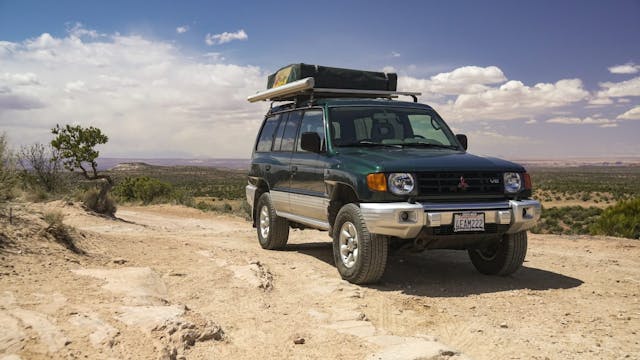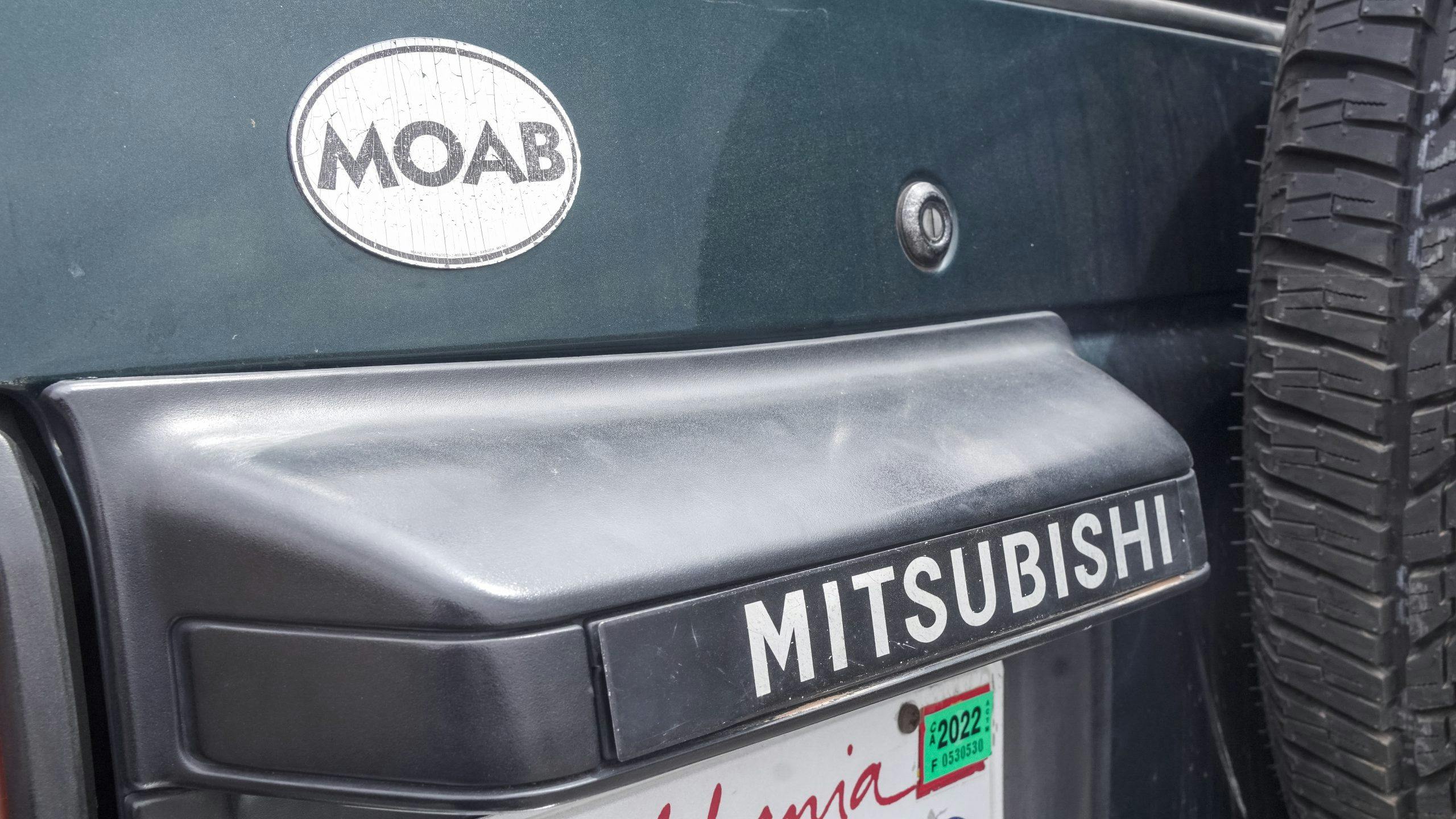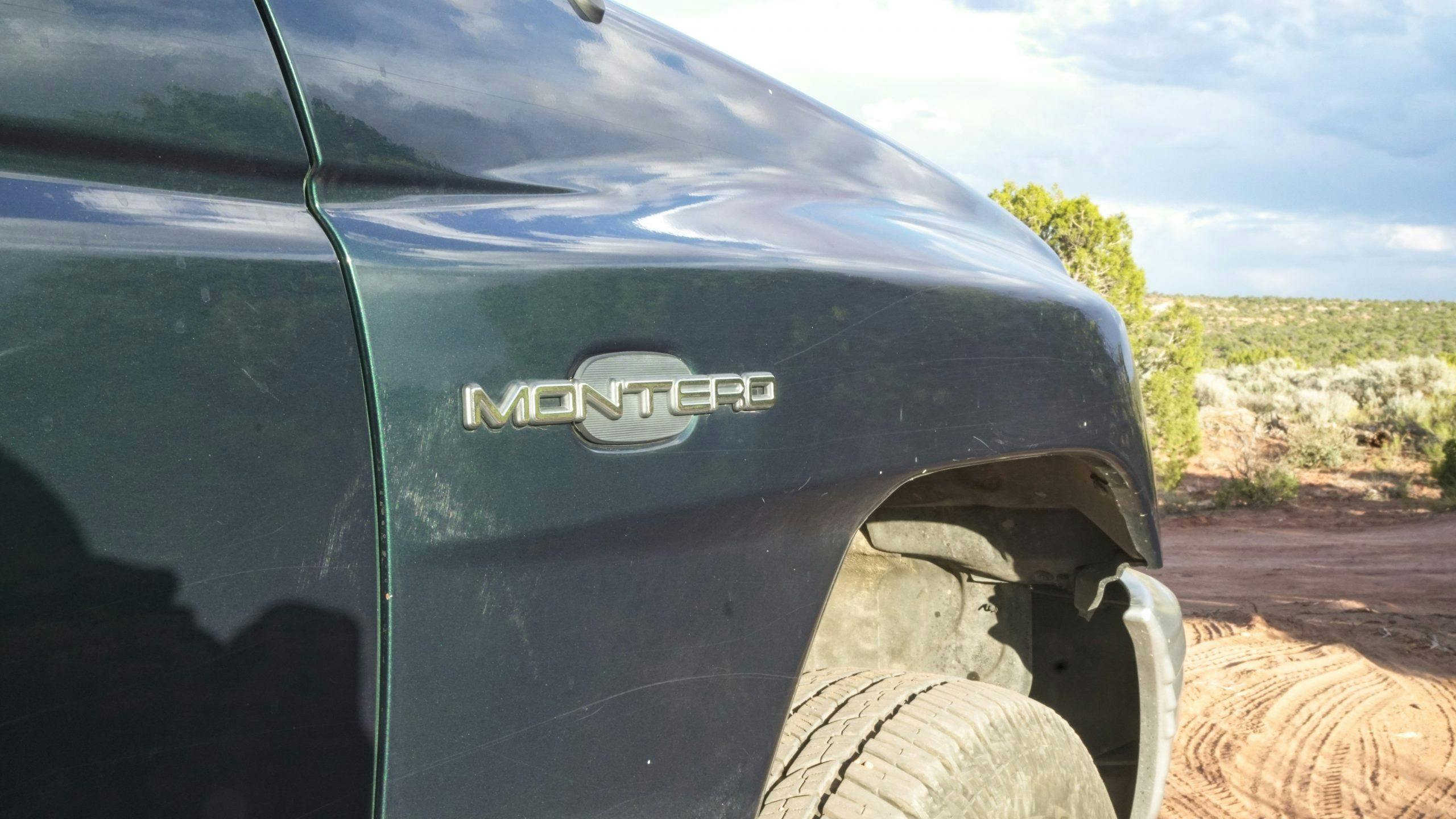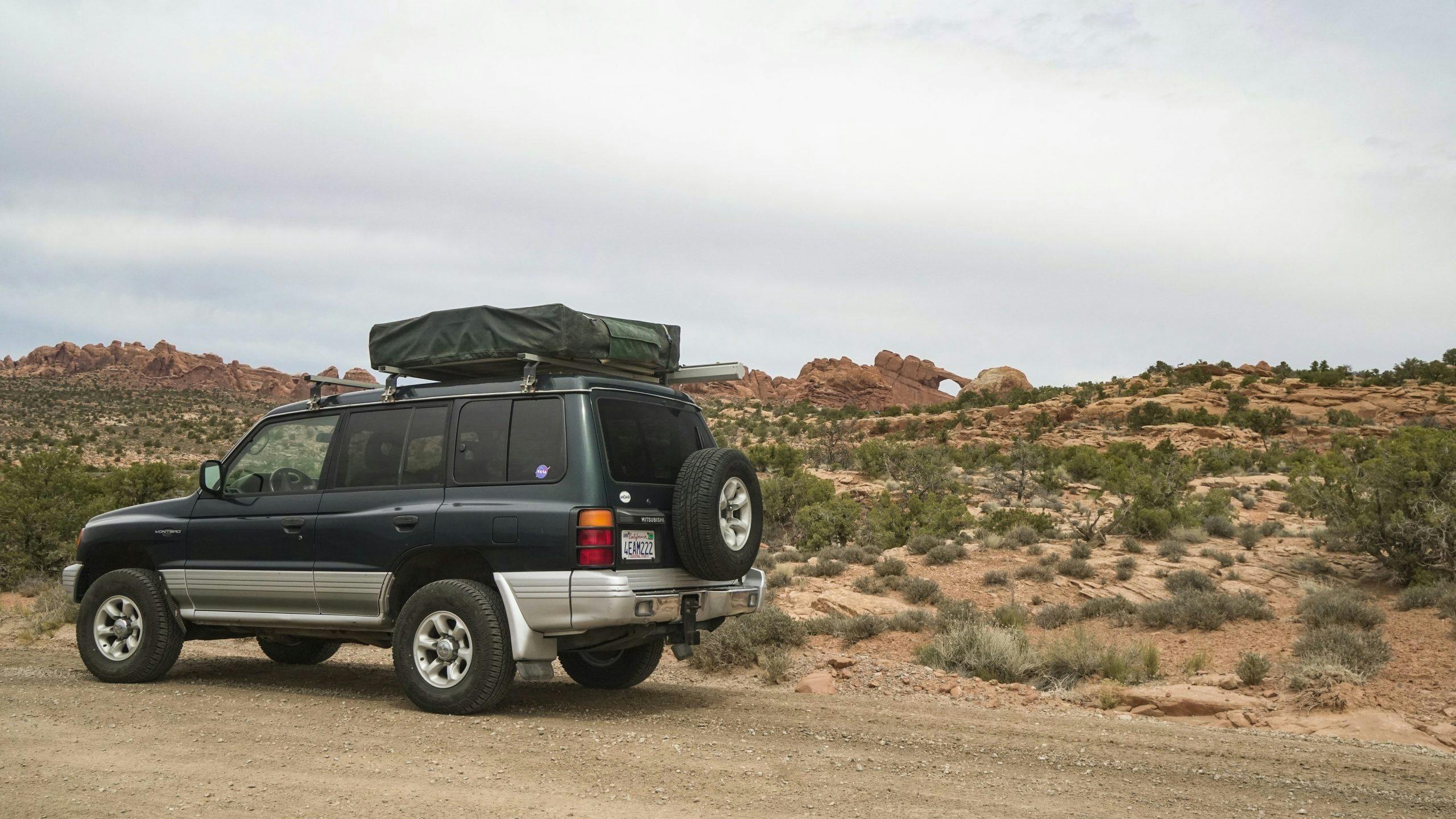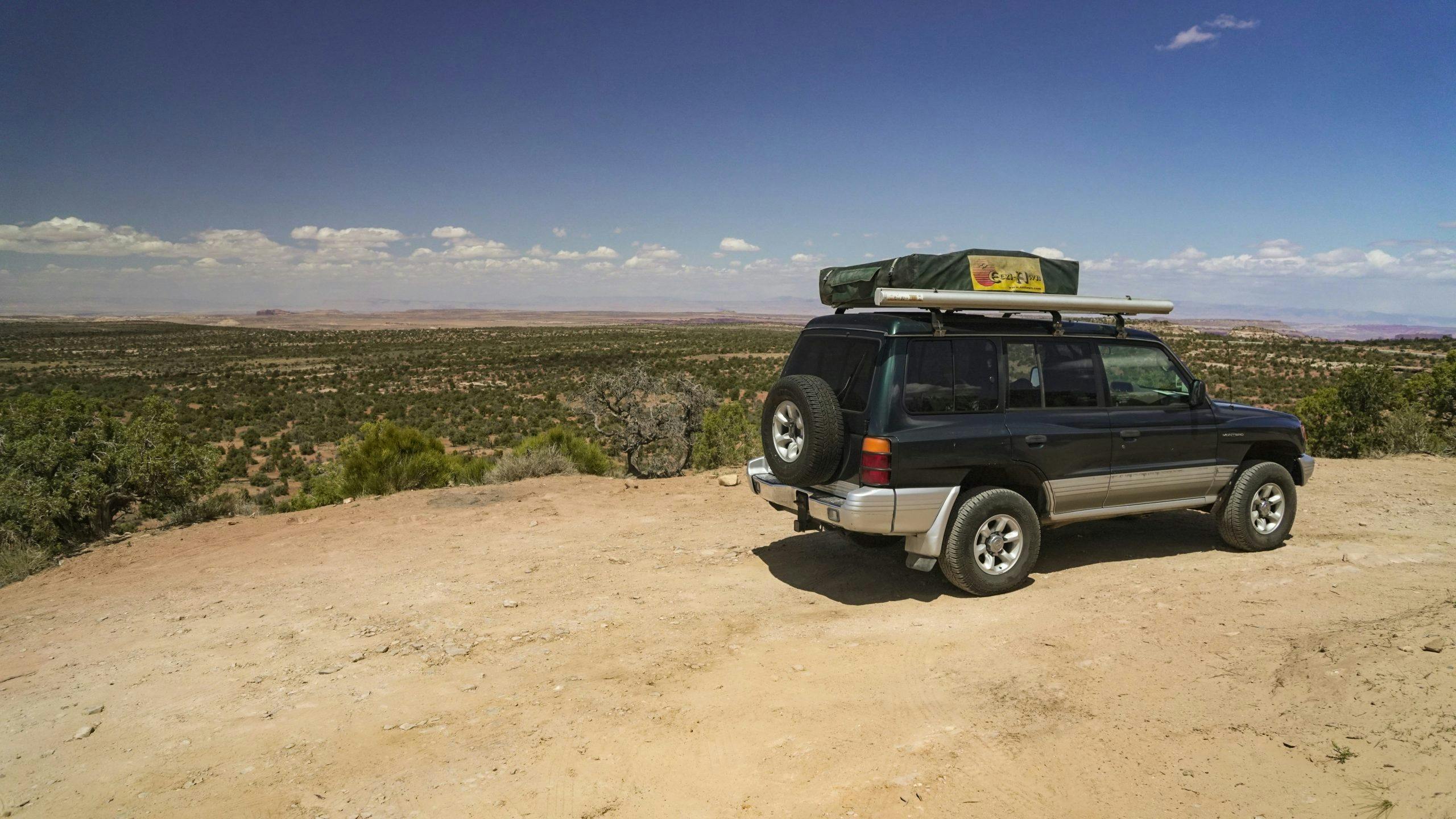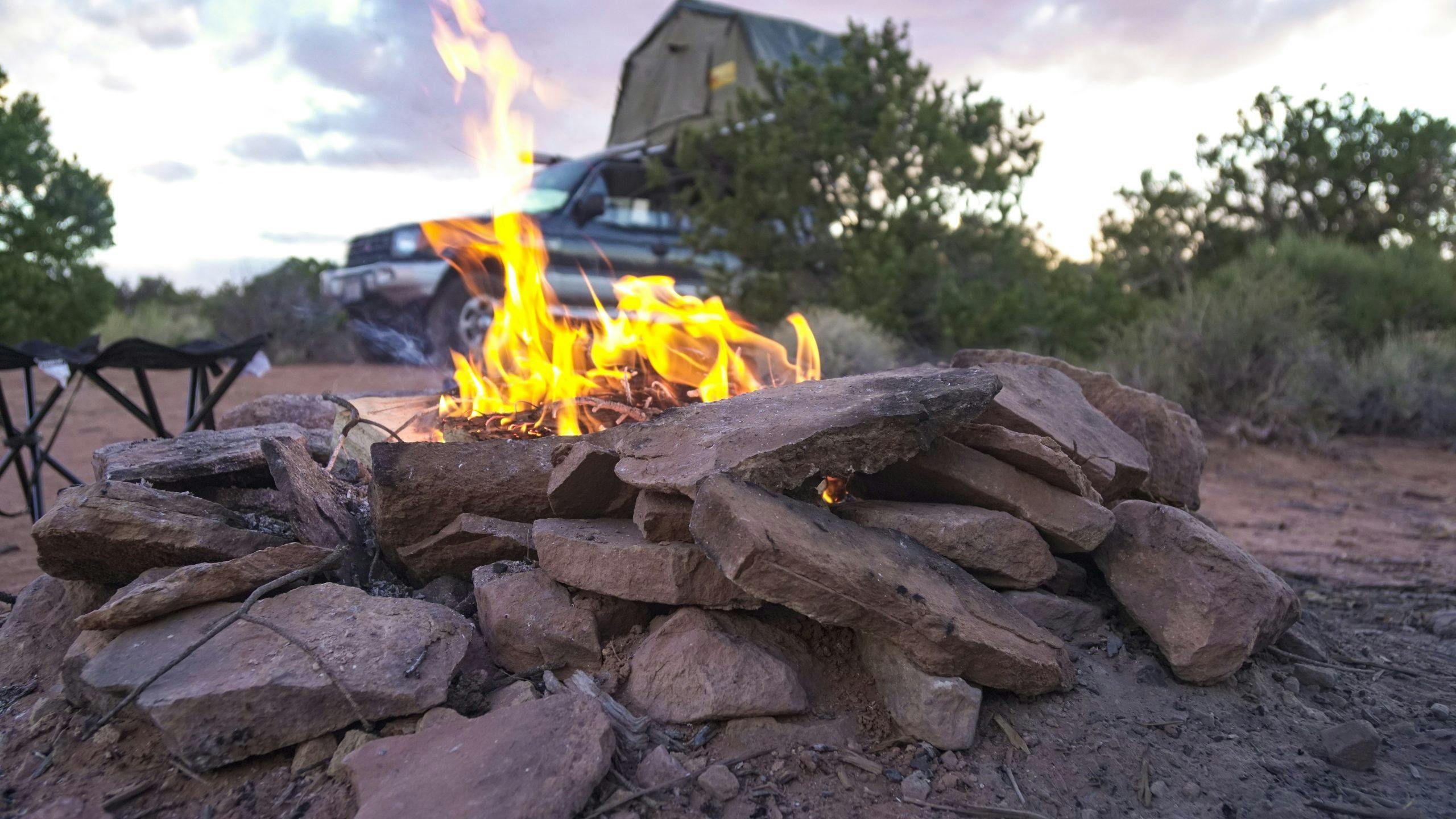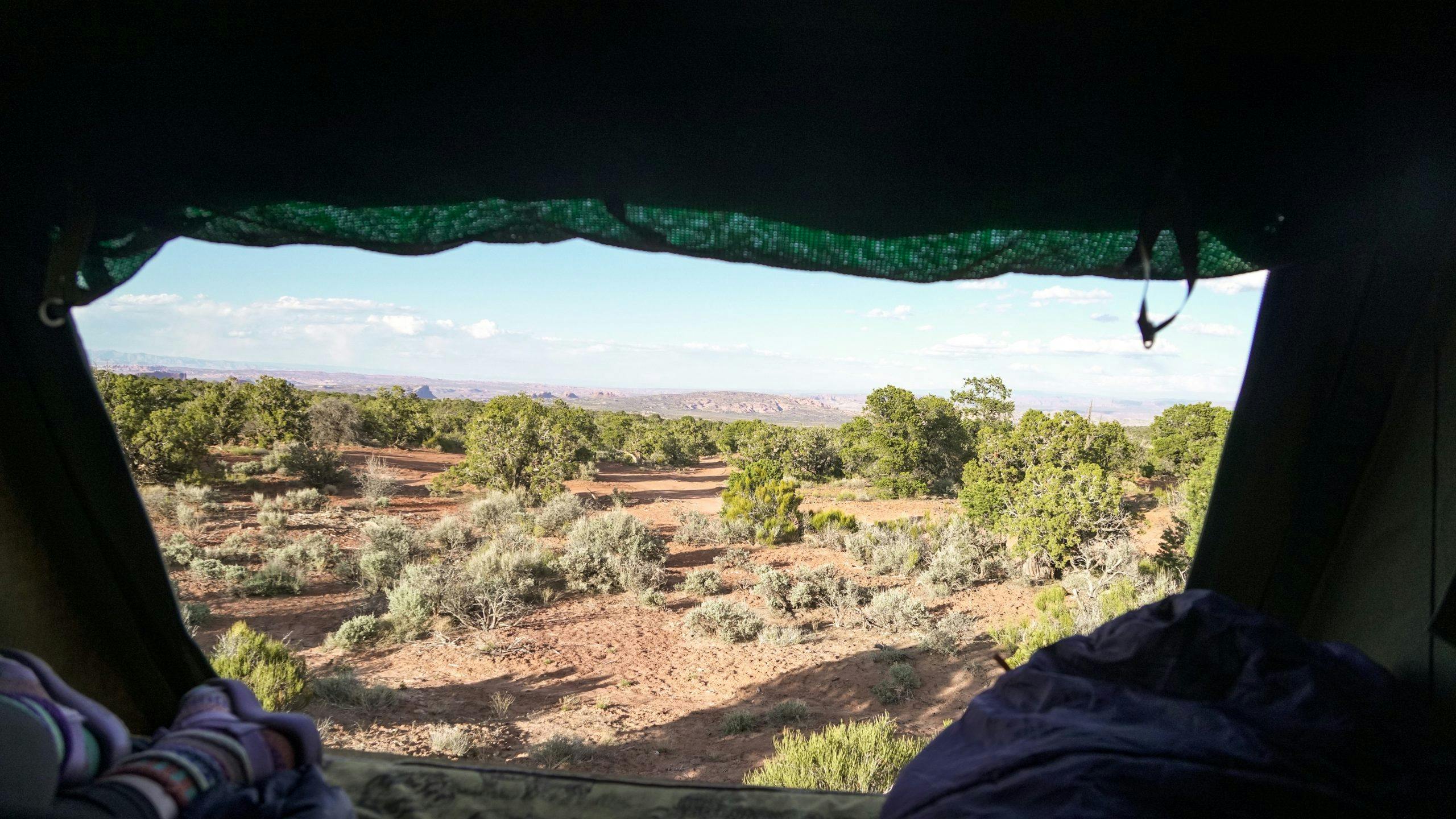Montero in Moab: Growing to love an overlooked 4×4 in the age of escape
If there was one thing made painfully clear by recent events, it was that self-contained exploration of this grand country cannot be over-valued. As the nation tried to figure out how to escape its own four walls without endangering the neighbors, camper and RV sales went through the roof. Airstreams were the new Airbnbs, and one way or another, those who could traded wings for wheels and set out on road trips to anywhere else.
Although it was already growing in popularity prior to the world’s sudden stop, “overlanding” rode the pandemic lightning to new heights. If you’re unfamiliar with the term, think “backpacking meets 4x4ing meets the normal side of doomsday preppers.” It’s as self-contained as can be, with sleeping quarters either atop of or inside vehicles built to flatten forest roads, desert trails, and harsh terrain. The journey itself sets overlanding apart from the other forms of camping.
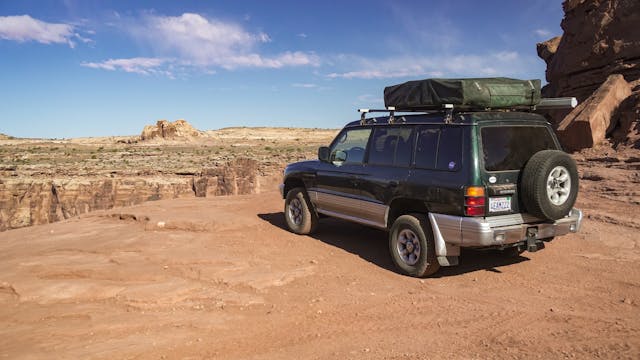
Like so many cooped up inside during quarantine, I had become quite taken with the idea of an overlanding rig. Moving to Northern Michigan, with its endless green forests and gorgeous lakeshores, only compounded that interest. Without the stack of cash I’d need to just head over to a dealership and scoop up a new 4×4, I spent more time than I should have scouring classifieds for the right candidate. Problem is, the vehicles best suited for these sorts of activities have become immensely popular (my grand fascination was anything but original), so used ones were either gone in a flash, or grossly overpriced.
My search began where many used car searches do—Toyota. The 4Runner and Tacoma are some of the most universally loved vehicles in existence, but the Toyota Tax is real. Perhaps a Jeep XJ or maybe even a four-door Wrangler? The former didn’t pass muster with the wife, the latter was still too pricey. Here’s an option: a Lexus GX470, which was basically a cushier 4Runner, right? Not a chance. When the soccer moms sell them, there’s a line out the door; I was priced out of every one I looked at. Still. My most recent fly-and-drive experience in a 1997 Lexus LS400 cemented my love for Japanese cars, and save for the perfect Wrangler, I really didn’t want to venture elsewhere. Slowly, the envelope of appeal widened, and the Mitsubishi Montero came into play.
Disregard the marque’s woeful current state and consider, for a moment, Mitsubishi around the turn of the century. The late 1990s were arguably the zenith of the company; the preceding decade brought motorsport glory in every dirt-based racing discipline the brand contested. In 1998, Mitsubishi finally captured its first World Rally Championship constructor’s title, at the hands of the inimitable Tommi Mäkinen, who notched his third of four consecutive WRC driver’s championships, all behind the wheel of the vaunted Lancer Evolution. That ’98 WRC accolade fit neatly in the cabinet next to the four Dakar Rally trophies that the marque had amassed by then. It would take its fifth title in ’98, and clock-off seven in a row from 2001–2008, making Mitsubishi the winningest manufacturer ever at one of the world’s most grueling—and occasionally tragic—off-road races.
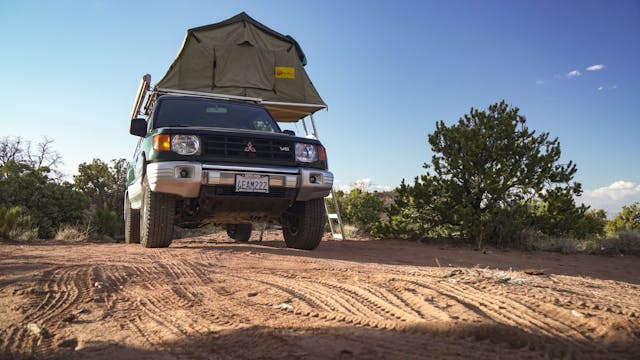
That motorsports success trickled into the showroom. In 1998, you could walk into a Mitsu dealership and see a bold twin-turbo V-6 grand tourer in the 3000 GT; a lithe, four-pot sports car in the Eclipse and Eclipse Spyder (both of which would be immortalized three years later with the release of The Fast and the Furious); or the Montero, a more road-worthy take on the Land Cruiser formula backed by years of motorsport development.
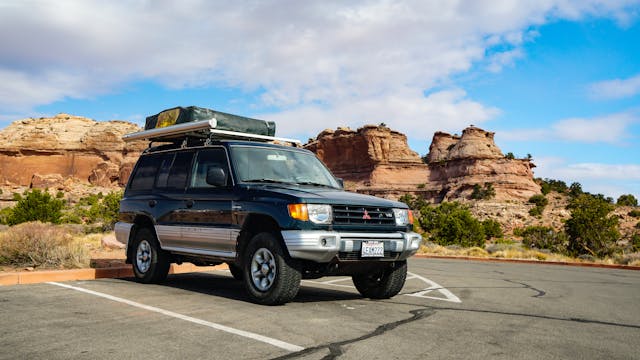
Here was a tried and true, globally-adored 4×4 with plenty of capability for the adventures I had in mind. I knew that Hagerty Editor-at-Large, Aaron Robinson, owned a second-generation Montero that was looking for a new home. The seed was planted. As quarantine dragged on and the itch to overland grew, I began to badger him about the Montero; questions and bi-monthly check-ins to see if he was willing to relinquish the keys yet.
Not long after the world told 2020 to kick rocks, a message from Aaron: Replacement truck found, let me know when you want to come. Within the day, I booked one-way travel to Moab, Utah, where he kept the Montero for high-desert hijinks.
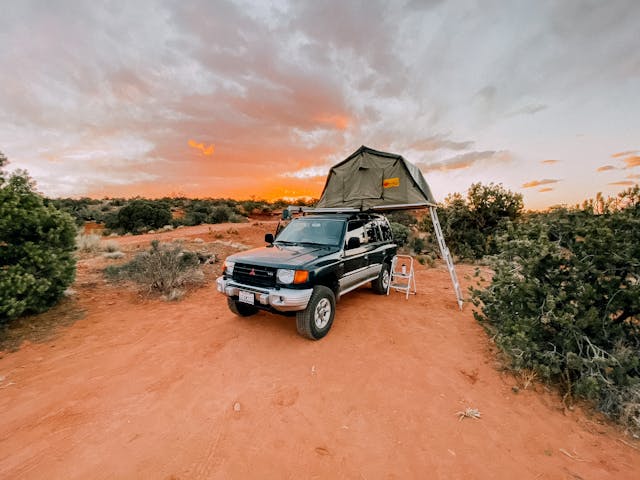
The truck was even better than I’d hoped. Navajo Green over Munich Silver, with paint that had seen a lifetime of adventures chasing vast skies and red dust. Atop its roof, a fold-out tent flanked by a retractable awning, both from a South African company with the slogan, “Keeping you out of the food chain.” Inside, a real, wobbly handle for Mitsu’s Active-Trac four-wheel-drive system, which employs a viscous coupling center differential to eliminate that pesky hopping while turning in four-high. Seats, worn thin from butts sliding out of them to getting a better glimpse at the majesty their occupants had trekked to.
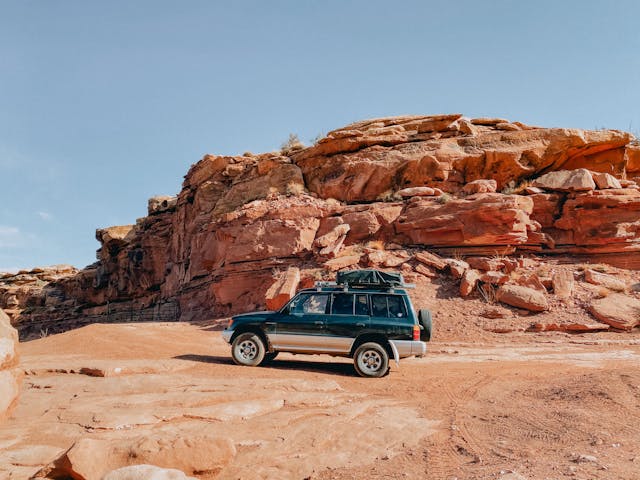
Moab feels like a cheat code. The tiny village carries a year round population of roughly 5000 people, but in the spring and fall that number can balloon to over 20 times that. Every vehicle stores mountain bikes, camping gear, or meaty tires meant to help you eschew pavement in favor of burnt orange rocks. Passion for the land—easily some of the best public off-roading in existence—hangs in the air thicker than the red dust.
With just two-and-a-half days to explore this grand area, we decided to be conservative and take the paths more traveled. When you’re within a 40-mile radius of two of the greatest national parks in existence, neither of which you have seen before, you swallow your own pride and line up at the gate, happy to pay an entry fee for the chance to feel small.
Arches National Park is just five miles north of Moab on Route 191. Its 76,519 acres of high desert tapestry are punctuated by rock formations that look like God’s dribble castles, protruding proudly from a hundred-mile horizon. Vehicle-wise, there’s nothing taxing about exploring the park; you could do it in a Prius, or an Odyssey, or a Tesla. But we were in the Montero, a plodding vehicle happier at 45 than 70. We loped along in our tippy green toaster content as could be, marveling at what we saw out the upright windshield. A suggestion: If you’re coming from the east coast, stay on eastern time and pull up to the gate at 6:00 a.m. Moab time to guarantee that you won’t get caught in the throngs of people who have also (rightly) decided the place is worth seeing. The parks are dealing with insane visitor numbers and occasionally have to suspend entry in the afternoons because they’re so full. The early bird gets the generic, crowd-free picture at Delicate Arch—the park’s signature feature.
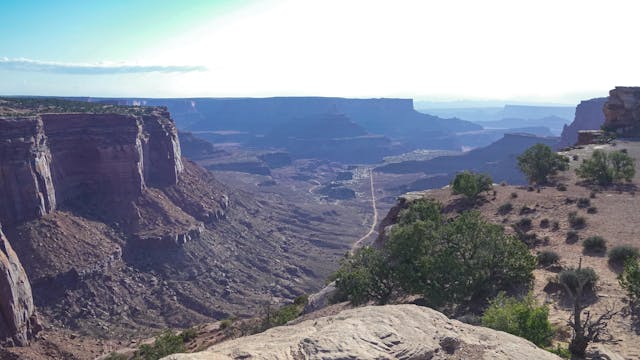
If Arches is a park for specifics, Canyonlands National Park is a park for scale. On a previous excursion involving Japanese SUVs and Canyonlands, Aaron himself said it best when he described the park and surrounding area as “Mother Nature cranking the volume up to 11 and breaking the knob off.” There are arches, rock formations, and hikes aplenty throughout each of the park’s four regions, but mostly, you’re seemingly never more than 15 minutes from the edge of a cliff with miles of canyons snaking out towards the sky. In the gorges below, side-by-sides—the new steed of choice for thousands of Moabites—slithered along trails such as the fabled White Rim Road. We wanted to join them, but had neither the time nor the right provisions to do so. (Another tip: Dead Horse Point State Park, the next-door neighbor to Canyonlands, is equally as impressive. Visit both, they share a common access road.)
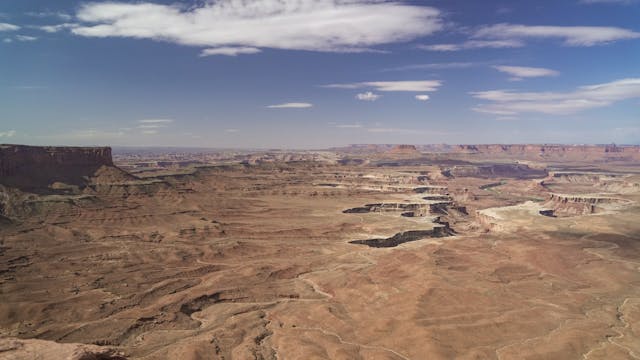
Between the hikes and the short jaunts down dirt paths simply because curiosity demanded so, I had plenty of time to think about our new vehicle. Turn-of-the-century Japanese automotive engineering is some of the best to ever exist. Offerings from the likes of Toyota, Honda, Nissan, Mazda, and Mitsubishi were compelling, full of value, and sensible no matter where you looked. In 1998—the model year of our new Montero—you could buy a brand-new Mazda Miata, Acura Integra Type R, Toyota Land Cruiser, Lexus LS400, Mitsubishi Montero, or Toyota Supra. Some twenty years on, all of these cars boast some level of collectible status. The Montero is lagging behind the others mentioned above; it’s not as recognizable today as the Land Cruiser, and it never had the lore of the Integra. But there’s a budding community of enthusiasts and aftermarket support springing up for Monteros, full of smart people developing work-arounds for common problems or helping fellow owners scour other countries for replacement and region-specific parts. It’s an invigorating group to be a part of, and I’m just getting started.
We camped for three nights in Moab, the first two of which were in camp grounds—once out of a desire to ease into the rooftop tent life, once because of a planning error on my part. On the third night, we finally got the hang of what these Bureau of Land Management grounds had to offer. We didn’t think it was real at first. Just pull off the road down a trail and you can camp wherever free of charge, so long as you leave your site as good or better than you found it. We meandered down what felt like a goat path headed straight towards some cliffs with the La Sal mountain range in the background as the moon chased the sun from the sky. Once we found a suitable site, I positioned the Montero just so and we began setting up camp, which by then was down to a 30-minute endeavor. Within the hour, we had a small fire going and cold beverages in hand, reveling at what was around us.
Before the light had completely gone, my wife flipped the tent cover open and snapped a photo of what we’d be greeted by the following morning. That picture—the grungy desert foliage showing green against a dusty red ground with massive snow-capped mountains just out of view—is among my absolute favorites from the trip. It would be topped later that night, when I awoke randomly and climbed out of the tent, just to see what absolutely zero light pollution could feel like in a place already too beautiful to process. There, spanning the entire width of the sky, was an arm of the Milky Way galaxy, clearer and more vivid than anything I’d seen on a screen. Although those kinds of moments can be few and far between, they’re too good to miss, and part of the allure of overlanding. I climbed back in bed, drifting off to dreams of adventures to come in the months and years ahead.

The highways headed east on our journey home revealed that, yep, this was still a late ’90s SUV. Despite the independent front suspension, the Montero proved wobbly in crosswinds. Not unmanageable, but certainly not helped by the rooftop tent and the truck’s two-inch suspension lift. Following behind semi trucks was a handful, as was any speed north of 75 mph. Over the next two-and-a-half days, we traded the deserts of Utah for the mountains of Colorado, where we climbed the fateful Eisenhower Pass on I-70 using of all four of our transmission’s forward gears. Eventually the mountains gave way to the ranch and farmland east of Denver, scenery that kept us company all the way to just east of Joliet, Illinois, where we split off I-80 and headed north to Michigan. We made it home without much issue, tired but fulfilled by what we’d seen, and smitten with our new rig.
There are a lot of ideas rattling around in our heads for what to do—and where to go—next. Park something outfitted for exploration in your driveway, and every day not spent doing that can feel somewhat wasted. Real life beckons, naturally; we’ll be lucky to get away more than handful of times this summer. It’s still comforting to know that no matter what sense of normality returns in the year to come, we now have the keys to a vehicle well-suited to escape it all. Lots to do and learn. Even more memories to make. We can’t wait to get started.
